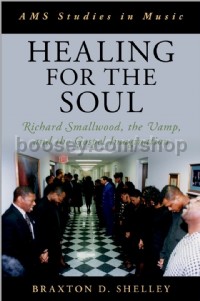Healing for the Soul Richard Smallwood, the Vamp (Hardcover)
Healing for the Soul Richard Smallwood, the Vamp (Hardcover)
* Estimated price converted from UK retail price
Between the first and last words of a black gospel song, musical sound acquires spiritual power. During this unfolding, a variety of techniques facilitate musical and physical transformation. The most important of these is a repetitive musical cycle known by names including the run, the drive, the special, and the vamp. Through its combination of reiteration and intensification, the vamp turns song lyrics into something more potent. While many musical traditions use vamps to fill space, or occupy time in preparation for another, more important event, in gospel, vamps are the main event. Why is the vamp so central to the black gospel tradition? What work-musical, cultural, and spiritual-does the gospel vamp do? And what does the vamp reveal about the transformative power of black gospel more broadly?
This book explores the vamp's essential place in black gospel song, arguing that these climactic musical cycles turn worship services into transcendent events. A defining feature of contemporary gospel, the vamp links individual performances to their generic contexts. An exemplar of African American musical practice, the vamp connects gospel songs to a venerable lineage of black sacred expression. As it generates emotive and physical intensity, the vamp helps believers access an embodied experience of the invisible, moving between this world and another in their musical practice of faith. The vamp, then, is a musical, cultural, and religious interface, which gives vent to a system of belief, performance, and reception that author Braxton D. Shelley calls the Gospel Imagination. In the Gospel Imagination, the vamp offers proof that musical sound can turn spiritual power into a physical reality-a divine presence in human bodies.




